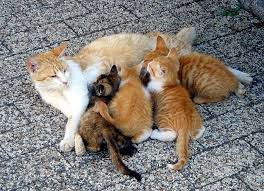Dog Parks and Exercise Yards
A great exercise option that has developed in recent years is the inclusion of dog parks within city limits. Here dogs can run and exercise in a controlled environment made especially for them. Dog parks are usually fenced areas with gated entry-way and exits. Some have swimming ponds for dogs to use, and most usually have some sort of watering taps or hydrants. They usually have gear so you can pick up and dispose of doggie waste.
Dog parks have come into existence because of the growing pet population and the need for people to interact with and exercise their pets. City planners have recognized this need and are now including dog parks in their urban development plans. Dog parks allow dogs and people to interact together in a social manner that is recognized as being beneficial to society.
Some dog parks are more elaborate than others. Many offer shaded areas for dogs and people to hide from the sun. Some have benches and picnic tables. Others, as mentioned have swimming ponds or pools for the dogs. Some parks have separate areas for large and small or timid dogs. Some parks have a significant amount of acreage for the dogs to run in, while others are smaller and compact. But, all dogs are allowed to run free and socialize with other canine companions in a safe, confined and controlled environment.
Dog parks can be great areas for you to take your dog for a romp if your dog has the correct social skills with humans and other dogs. Un-naturally aggressive or possessive dogs should not be taken to a dog park.
Dog Parks Have Some Restrictions
There are a few restrictions to most dog parks that you should be aware of, on top of not bringing an aggressive dog to a dog park:
- You should never take your dog to a dog park if he is sick or has been diagnosed with a contagious disease. Make sure your dog’s vaccinations are up-to-date.
- You should also not take a dog that is in heat to a dog park. This can lead to dog fights.
- Some dog parks also have limits on the number of dogs per handler—typically three dogs per handler. The fear is that one person cannot keep control of more than three animals at a time.
- Dogs should be allowed to run off-leash. If your dog needs to be leashed to be controlled, he should not be brought to a dog park. But do bring a leash in case your dog needs to be controlled at some point.
- You should remove any choke-type collars before allowing your dog to run in a dog park. Another dog’s teeth could become caught in the collar while playing causing panic in your dog or the other dog, which could lead to injury.
- Dog parks are dog play areas, not children’s. Some parks have age limit restrictions for people attending there.
- Most dog parks also do not allow food of any kind into the park. Food can incite dog fights.
- All dog parks require you to clean up after your pet, and most provide the equipment and disposal units for you to do this easily.
- If you pet is possessive of his toys, do not bring them to the dog park.
- Do not allow your dog to dig holes, or if he does fill them up before you leave.
Things To Think About
- It is possible that your dog may contract an illness from another dog. Not all owners may be as diligent as you are in caring for their pet’s health.
- It is possible that your dog could get into something he shouldn’t and get sick (like an un-lidded trash can).
- It is possible that your dog may end up in a fight with another dog.
On the whole, though, the benefits of taking your dog to a dog park for exercise outweigh the risks. It is a great way to help him socialize with other dogs, and for you to socialize with other pet lovers as well.



